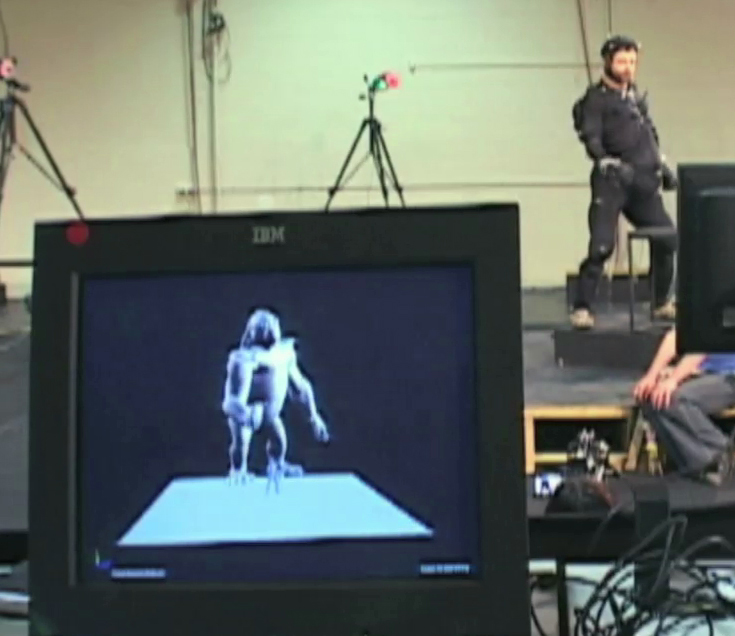Tom Parkin, Jamie Hogan and I went to Mel 114 as planned and learnt some of the basics using the motion capture suit.
We began by checking where there was strong magnet force on the ground (where electric current ran through wires) and sticking pieces of paper there. This would help us to avoid stepping there when using the suit to avoid any interference.
We then learnt a bit about the software, each time to calibrate the suit we need to run 'go60fps.bat', when it detects all the sensors and is happy we run cobra view. This displays a simple stickman shape, we tried moving an arm and it showed up on the computer. When making a sequence we just select actions/record and then it will record what the suit does, when we're done hit stop and save it as a '.bvh' file (most common mocap data file)
 Jamie was the one to use the suit, so we got him strapped in, making sure the suit was skin tight. We adjusted the sensors to be close to the bone, away from muscly areas; so the movement of the bone was tracked and not the muscle. There are a lot of velcro straps on the suit so it isn't difficult to eliminate the slack.
Jamie was the one to use the suit, so we got him strapped in, making sure the suit was skin tight. We adjusted the sensors to be close to the bone, away from muscly areas; so the movement of the bone was tracked and not the muscle. There are a lot of velcro straps on the suit so it isn't difficult to eliminate the slack.We then took pictures of Jamie in the calibration cube. We took a photo, from about waist height, of his front, and then his right side. We imported these photos on to the computer using 'auto cal' t o create an actor file for Jamie. We had to adjust the points to his body/arms/legs etc. We then loaded it into the cobra program and had Jamie stand completely still while it calibrated, idealy Jamie would be lying down.
When happy Jamie moved around and the stickman mirrored his movement, well almost...
We had a number of issues go wrong, his legs would cross and it would get worse as it went on, because the magnetic force would become stronger. When Jamie would raise his arms completely the stickman shoulders up would point down. I think perhaps the actor file was not clear enough, but it is expected to encounter problems when using this for the first time.
Need to take a break from this until Thursday Dec 10th because of other assignments, but we know the direction we are headed and how much time it takes to get an actor set up. Steve Harris was very helpful and it will help to have more people helping when we try again.








